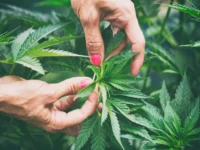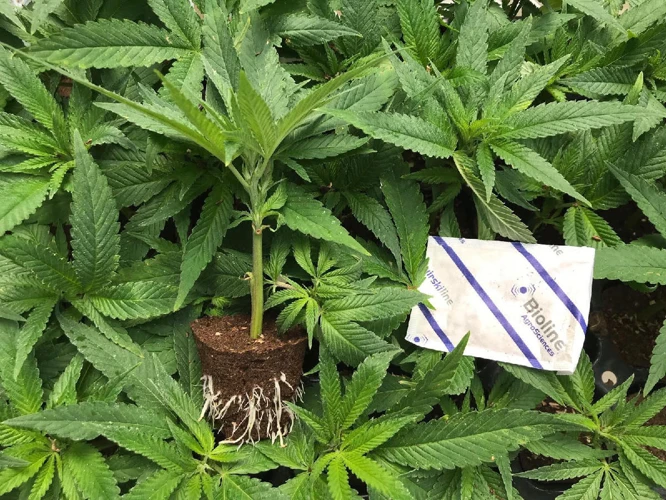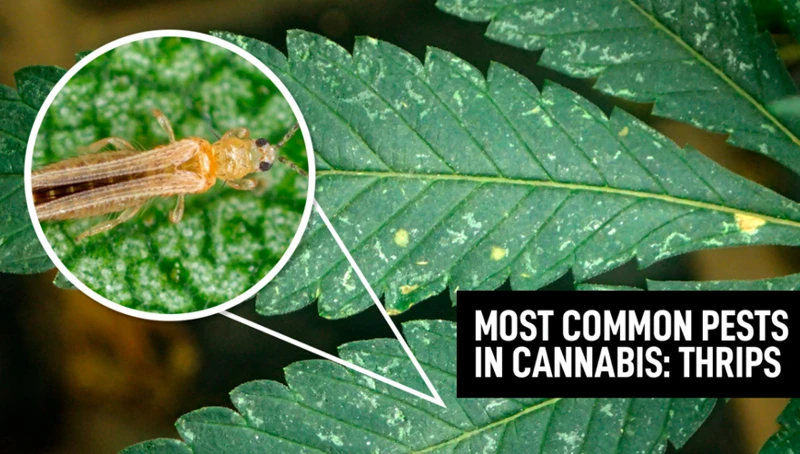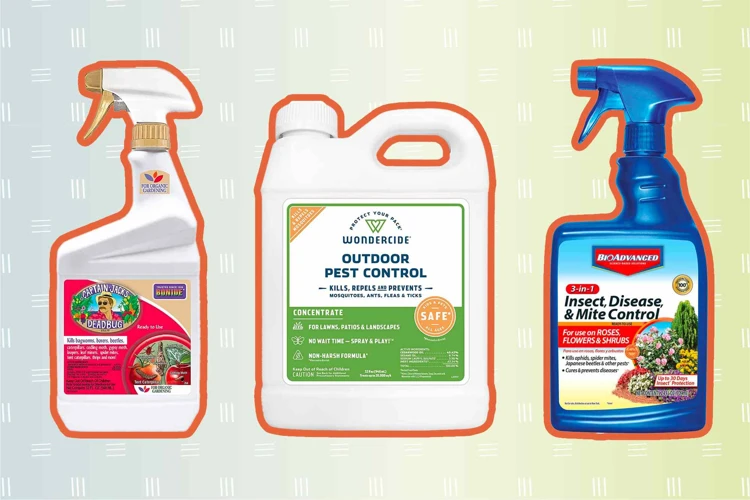
Chemical Pest Control: How to Keep Your Cannabis Garden Healthy and Pest-Free
For cannabis gardeners, pest control is a critical aspect of ensuring a healthy and abundant harvest. However, with so many different pest control products on the market, it can be daunting to choose the right one for your garden. Chemical pest control products are one option for addressing cannabis pests, but it’s important to understand their benefits and drawbacks before deciding if they’re the right choice for you. In this article, we will delve into the world of chemical pest control and explore how to choose the right product for your cannabis garden.
What is Chemical Pest Control?
Contents
Pest infestations can quickly wreak havoc on cannabis gardens, leaving growers with damaged crops and lost profits. To combat these pests, many growers use chemical pest control products. But what exactly is chemical pest control, and how does it work? In this section, we’ll delve into the world of chemical pest control to help you understand its purpose, benefits, and drawbacks.
Understanding Chemical Pest Control
Chemical pest control involves the use of synthetic chemicals to eliminate pests that may be affecting your cannabis garden. These chemicals, which come in different forms such as sprays, baits, and fumigants, act as toxic substances that can either repel, poison, or disrupt the development of pests. The primary goal of chemical pest control is to eradicate pests effectively and efficiently, helping growers to maintain a healthy and productive cannabis garden.
Advantages of Chemical Pest Control
When it comes to pest control, using chemicals has several advantages over other methods. Firstly, it is effective in controlling pests and preventing them from getting to a level where they cause significant damage to plants. Chemical pesticides offer quick results, which can save the plants from further damage.
Secondly, chemical pest control products are easy to apply and can be done with minimal effort. This method can save time, money, and energy compared to other pest control methods like manual removal or biological control. Additionally, chemicals are long-lasting, providing continuous protection against pests over an extended period.
Disadvantages of Chemical Pest Control
Despite its effectiveness, chemical pest control has several notable drawbacks. One is its potential negative impact on the environment, especially if not used correctly. Some chemicals can be toxic to other animals and pollute the soil and water, causing harm beyond the intended target.
Another issue is the potential harm to human health. Some chemicals, when inhaled or absorbed through the skin, can lead to health complications like respiratory problems, allergies or skin irritation. To avoid these issues, users must ensure they follow safety guidelines during application.
Table: Advantages and Disadvantages of Chemical Pest Control
| Advantages | Disadvantages |
|---|---|
| Quick and effective in controlling pests | Potential negative impact on the environment |
| Easy to apply with minimal effort | Potential harm to human health |
| Long-lasting protection against pests |
While chemical pest control may be effective against pests, it’s essential to understand its pros and cons before deciding to use it. Observing safety guidelines during application and handling can mitigate the potential negative impact on the environment and human health.
Benefits and Drawbacks of Chemical Pest Control
Chemical pest control is the use of pesticides to eliminate pests that pose a threat to cannabis plants. While chemical pest control products can be effective at controlling pests, they also come with a number of benefits and drawbacks that growers should be aware of before making a decision to use them.
Benefits of Chemical Pest Control:
- Effective: Chemical pest control products can be highly effective at eliminating pests from your cannabis garden, especially when used correctly and in combination with other pest control methods.
- Fast-acting: Unlike some non-chemical pest control methods, such as introducing natural predators, chemical pest control products typically work quickly to eliminate pests.
- Wide range of options: There are many different types of chemical pest control products available, giving growers a range of options to choose from based on their specific pest problem.
- Easy to use: Many chemical pest control products are simple to use and can be applied easily with a sprayer or other applicator.
Drawbacks of Chemical Pest Control:
- Health risks: Chemical pest control products can pose a health risk to both the grower and anyone who consumes the cannabis. Exposure to these products can lead to skin irritation, respiratory problems, and other health issues.
- Environmental impact: Chemical pest control products can have a negative impact on the environment, including polluting water supplies and harming non-targeted wildlife.
- Resistance: Overuse of chemical pest control products can lead to pests evolving a resistance, making the products less effective over time.
- Cost: Chemical pest control products can be expensive, especially if you need to use them frequently to control a persistent pest problem.
Before deciding to use chemical pest control, growers should carefully weigh the benefits and drawbacks and consider whether a non-chemical pest control method would be a safer and more environmentally-friendly option. It’s also important to carefully follow the instructions on the product label and take steps to minimize exposure and reduce the risks associated with chemical pest control.
Identifying Common Cannabis Pests
As a cannabis grower, it is important to be able to identify common pests that can infest and damage your plants. These pests can vary depending on your location and growing conditions, but some of the most common ones that you may encounter include spider mites, thrips, aphids, whiteflies, mealybugs, and fungus gnats.
Spider mites are tiny arachnids that feed on the sap of the cannabis plant, causing yellow or white spots on the leaves. They are difficult to see with the naked eye, but you may notice their fine webs on the plant. Thrips are also small and can cause damage to the leaves by sucking out their contents, causing discoloration and distortions. Aphids are small, soft-bodied insects that come in a variety of colors and can reproduce rapidly. They feed on the sap of the plant and excrete a sticky substance that can attract other pests and lead to mold growth.
Whiteflies are also sap-sucking insects that can cause yellowing and wilting of the leaves. They are white and fly around when the plant is disturbed. Mealybugs are small, white, cottony-looking insects that feed on the sap of the plant and can leave honeydew on the leaves. Fungus gnats are small, black flies that lay their eggs in the soil, and the larvae feed on the roots of the plant, causing stunted growth and yellowing of the leaves.
Identifying these pests early on is crucial for effective pest control, and regular inspections of your plants can help you catch infestations before they become a problem. Look for signs of damage, discoloration, and unusual activity such as web or fly activity around the plant.
Choosing the Right Chemical Pest Control Product
When it comes to protecting your cannabis garden from pests, choosing the right chemical pest control product can be a perplexing task. With so many options available on the market, it can be difficult to determine the best solution for your specific needs. However, by understanding the important factors to consider and the different types of products available, you can make an informed decision to keep your plants healthy and thriving. In this section of the article, we will explore the key considerations for selecting the right chemical pest control product and provide guidance on effective and safe application.
Factors to Consider Before Choosing a Chemical Pest Control Product
Before deciding on a chemical pest control product for your cannabis garden, there are several important factors to take into consideration. These factors will help you choose the most effective and safe product for your needs.
- Type of Pest: The first thing to consider is the type of pest that is plaguing your cannabis plants. Different pests require different types of chemical pest control, so it’s important to accurately identify the pest before selecting a product.
- Safety: Safety is a top priority when it comes to using chemical pest control. Make sure to read the product label carefully to ensure it is safe for use on cannabis plants and follow all safety precautions provided.
- Effectiveness: Of course, the effectiveness of the product is also a crucial factor to consider. Look for products with proven track records and positive customer reviews to ensure that you are getting a product that will work for your specific pest problem.
- Mode of Action: Different chemical pest control products work in different ways, so it’s important to choose a product that targets the source of the pest problem. For instance, if you have a pest that feeds on the leaves of your cannabis plant, you’ll need a product that targets the pest’s mouthparts rather than one that targets its reproductive system.
- Residue: Residue can be a concern when it comes to using chemical pest control products on cannabis plants. Look for products that have minimal residue or can be safely washed off before harvesting.
- Cost: Finally, cost is a factor to consider. Chemical pest control products can vary widely in price, so it’s important to choose a product that fits your budget while still meeting your needs.
By taking these factors into consideration, you can make an informed decision when choosing a chemical pest control product for your cannabis garden.
Types of Chemical Pest Control Products
When it comes to chemical pest control products, there are several different types available on the market. Each type has its own set of advantages and disadvantages, and it is important to understand these before choosing the right product for your cannabis garden.
Insecticides are the most common type of chemical pest control product. They work by targeting and killing insects that are harmful to your plants. There are two main types of insecticides – contact and systemic. Contact insecticides kill insects on contact, while systemic insecticides are absorbed into the plant and kill insects when they feed on it. Insecticides are often sold as sprays, but can also come in other forms such as dusts or granules.
Fungicides are used to control fungal infections on plants. They work by destroying the fungi that cause diseases such as powdery mildew or botrytis. There are many different types of fungicides, including both organic and synthetic options. They can come in the form of sprays, powders, or granules.
Rodenticides are used to control rodents such as mice or rats. They work by targeting the nervous system of the rodent and causing death. Rodenticides often come in the form of pellets or baits.
Herbicides are used to control weeds in and around your cannabis garden. They work by targeting the plant’s metabolism or growth process. Herbicides can be selective or non-selective. Non-selective herbicides kill all plants they come into contact with, while selective herbicides only target specific types of plants. They are usually sold as sprays or concentrates that you mix with water.
It is important to note that while these products are effective at controlling pests, they can also have negative impacts on the environment and other organisms. It is important to carefully read and understand the label before using any chemical pest control product in your cannabis garden.
Effectiveness and Safety of Chemical Pest Control Products
When it comes to chemical pest control products, effectiveness and safety are two crucial factors to consider. Here are some important points to keep in mind:
- Effectiveness: Chemical pesticides are designed to quickly and efficiently eliminate pests from your cannabis plants. However, not all products are equally effective against all types of pests. Some pests may also become resistant to certain pesticides over time, meaning that a product that may have been effective in the past may not work as well in the future. It’s important to research and choose a product that is specifically designed to target the pests that are most common in your area and in your cannabis garden.
- Safety: While chemical pesticides can be highly effective at eliminating pests, they can also pose risks to the health and safety of humans and pets if they are not used properly. Some pesticides are highly toxic and can cause serious harm if ingested or absorbed through the skin. It’s important to carefully follow all instructions and safety precautions when handling and applying chemical pesticides, including wearing protective gear like gloves, goggles, and a mask. It’s important to keep chemical pesticides out of reach of children and pets and to store them in a secure, well-ventilated location.
Chemical pesticides can be a highly effective tool for controlling pests in your cannabis garden, but it’s important to choose a product that is both effective and safe for your plants, your own health, and the health of those around you. Always take the necessary precautions when using chemical pesticides and consider non-chemical alternatives whenever possible.
How to Apply Chemical Pest Control Products Safely and Effectively
It is important to use chemical pest control products with caution to prevent any harm to yourself, your plants, and the environment. Here are some tips on how to apply chemical pest control products safely and effectively:
| Step | Explanation |
|---|---|
| 1. Read the Label | Before using any chemical pest control product, make sure to read the label carefully. The label will provide you with important information about how to safely use the product and what pests it is effective against. |
| 2. Wear Protective Clothing | When applying chemical pest control products, make sure to wear protective clothing such as gloves, a long-sleeved shirt, pants, and closed-toe shoes. This will help prevent any chemical exposure to your skin. |
| 3. Mix the Product Properly | Follow the instructions on the label carefully when mixing the product. Adding too much or too little of the product can decrease its effectiveness or harm your plants. |
| 4. Apply the Product | Apply the product evenly and thoroughly to all affected areas of your cannabis plants. Make sure to cover both the tops and bottoms of leaves. |
| 5. Observe Your Plants | After applying the product, observe your plants for any signs of stress or damage. If you notice any adverse effects, stop using the product immediately. |
| 6. Clean Up and Store the Product | After applying the product, make sure to clean up any leftover product and store it in a safe place away from children and pets. Follow the label instructions for proper disposal of any unused product. |
By following these tips, you can use chemical pest control products safely and effectively while protecting your cannabis garden and the environment.
Non-Chemical Alternatives to Pest Control
It’s important to consider non-chemical alternatives to pest control in order to minimize potential harm to both the environment and those consuming the cannabis products. There are several natural methods that can be effective in controlling pest infestations without the use of harmful chemicals.
Companion Planting: Companion planting involves growing certain plants alongside your cannabis plant that typically repel pests. For example, marigolds can be planted next to cannabis as they release a scent that thrips and other pests find repulsive, while also attracting beneficial insects like ladybugs.
Mechanical Control: Using physical barriers like sticky traps or screens can help prevent pests from accessing your cannabis plants. Pests can also be physically removed from plants by hand-picking or using a strong stream of water to knock them off.
Biological Control: Introducing natural predators to your garden is a biological control method that can help keep pests at bay. For example, lacewings and praying mantises are natural predators of aphids and other pests that can harm cannabis plants.
Environmental Control: Maintaining a healthy growing environment can also help prevent pest infestations. This includes proper ventilation, humidity control, and ensuring that plants are not overcrowded.
While these non-chemical methods may not be as immediately effective as chemical pesticides, they are safer for the environment and for those consuming the cannabis products. Implementing a combination of these methods can also provide the best results and ensure a healthy and pest-free cannabis garden.
Conclusion
In conclusion, choosing the right chemical pest control product for your cannabis garden is crucial in maintaining a healthy and high-yielding crop. However, it is important to also consider the potential drawbacks and risks associated with these products.
On one hand, chemical pest control products offer a quick and effective solution to combating common cannabis pests such as spider mites and aphids. They also come in a variety of types to choose from based on your specific needs and preferences.
On the other hand, the use of chemical pest control products can lead to negative effects on the environment, as well as potential harm to humans and animals if not applied correctly. It is important to always follow the instructions carefully and use protective gear when handling these products.
Fortunately, there are also non-chemical alternatives to pest control such as integrated pest management, which involve a combination of natural predators, physical barriers, and cultural practices to prevent and control pests.
Ultimately, it is up to the individual grower to weigh the benefits and risks of using chemical pest control products in their cannabis garden. By understanding the factors involved and taking the necessary precautions, one can make an informed decision and maintain a healthy and thriving crop.
Frequently Asked Questions
What are some common cannabis pests?
Common cannabis pests include spider mites, thrips, whiteflies, aphids, and fungus gnats.
What is chemical pest control?
Chemical pest control is the use of pesticides to control or eliminate pests in a garden or crop.
What are the benefits of chemical pest control?
The benefits of chemical pest control include its effectiveness, fast action, and ability to control a wide range of pests.
What are the drawbacks of chemical pest control?
The drawbacks of chemical pest control include potential harm to the environment, risk to human health, and potential harm to non-target organisms.
What factors should I consider before choosing a chemical pest control product?
Factors to consider include the type of pest, the severity of the infestation, the stage of growth of the plants, and the safety of the product.
What are the types of chemical pest control products?
The types of chemical pest control products include insecticides, fungicides, and herbicides.
How effective and safe are chemical pest control products?
Effectiveness and safety vary depending on the product and how it is used. It is important to carefully read and follow the product label instructions.
What are some non-chemical alternatives to pest control?
Non-chemical alternatives to pest control include companion planting, using beneficial insects, and using organic methods such as neem oil and garlic spray.
Can chemical pest control products harm my cannabis plants?
Yes, if not used correctly, chemical pest control products can harm cannabis plants. It is important to follow the product label instructions and use the product at the appropriate stage of growth.
How can I apply chemical pest control products safely and effectively?
To apply chemical pest control products safely and effectively, carefully read and follow the product label instructions, use protective clothing, and use the product at the appropriate time and stage of growth.





